
By Mx Kris Vyas-Myall
Following their marriage in Gibraltar, experimental artist Yoko Ono and her husband, John Lennon, did something unusual for their honeymoon. In Amsterdam they stayed in bed… for peace.

In complete contrast to the infamous Two Virgins album cover, they were fully attired and let the press observe them for 8 hours a day during their week long stay. They said they wanted to promote peace via staying put and letting their hair grow out.
Is this a way to use their fame for a good cause? Or a stunt to drum up publicity? Whatever the case may be, it has drummed up a lot of media attention and discussion. And it is also certain the modern media has made communication of a message across the world easier than ever before.
Whether or not it will have any lasting effect remains the question, both for this protest and the short-lived quarterly magazine, Famous Science Fiction.
Famous #8: An Unconvincing Hair Peace

Dark Moon by Charles Willard Diffin

Illustration by H. W. Wesso
The cover and first internal art illustrate the main novella for this issue, the first in Diffin’s Dark Moon series. This was first published in Astounding’s May 1931 issue.
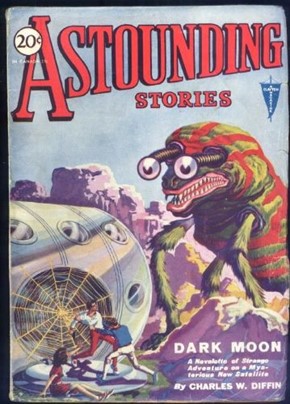
The original, looks better in colour
In this tale, earthquakes and tidal waves are plaguing the Earth, and mysterious creatures are attacking airliners. This all seems related to a new satellite that has entered orbit, a “dark moon” (named as such because it can only be seen when it transverses other bodies).
Travelling to explore this world are Chet Bullard and Walter Harkness, two Howard Hughes-esque business magnates, pursued by their rival Herr Schwartzmann.
It is full of the cliches of the day, including villainous Central Europeans, radium powered weapons, rescuing of a damsel-in-distress and giant insectoid and serpentine monsters. It also has the usual tendency of pulp fiction for over-description to the point of redundancy.
However, it moves along well, like a Douglas Fairbank adventure movie, with enough derring-do to keep you entertained. In addition, it makes more efforts than most short stories to place us fully in this future world, with mentions of a prior invasion from mole people living under the Earth and explanations of the fashions of the 1970s (apparently Harkness dresses much the same way I do in my profile picture).
This is a hard story to truly judge as it is really only the first section of a trilogy of tales. The cover image doesn’t take place until three quarters of the way through and they soon simply return to Earth. If it was written today, it probably wouldn’t gain more than two stars. However, I will be generous, in due deference to age, and give it a low Three Stars.
Art and Artiness by Lester Del Rey
This is the text of Del Rey’s speech that he was unable to give at the 1967 WorldCon. In essence, it is a broad-side against the New Wave. Whilst there are some interesting points that could be discussed, such as whether man in a crisis acts selfishly or selflessly, it comes across to me more as a poorly considered rant including such statements as:
“Art has been used as a cop-out for incompetent craftmanship.”
“It isn’t reality or integrity these writers are using. Instead, they’re using a cheap excuse for doing lazy work.”
“They have moved from the college writing class to the too-easy sale of stories without the need to rub against the real world of action under stress. They are empty men, and the only reality they can fully know is the pettiness of their character.”
So, Lester, allow me a quick retort.
Let us start be considering the ABC of the British New Wave (Aldiss, Ballard & moorCock). Starting with biography, Aldiss served in Burma with Royal Signal Corps and Ballard spent World War 2 in a Japanese internment camp. These seem reasonable environments for observing men under stress. None of the three, to the best of my knowledge, attended university creative writing courses.
Moving on to the craft itself. With the significant shrinking of the short fiction markets over the last ten years, I think it is hard to claim that the new wave get “too-easy sales”. Looking at the new fiction we reviewed last month at GJ, only around a quarter of it could be described as new wave in the broadest definitions. And it should be noted we don’t regularly review some of the pulpier publishers like Belmont and Arkham House. Indeed most of those we have are published in New Worlds, a magazine largely kept afloat by Moorcock churning out the better end of pulp adventures in a tea-fuelled fugue state.
Which leads us to the other point, these kinds of writers have shown they can indeed write and appreciate the “good-old stuff” very well at various points in their careers. Moorcock started off his career with the Sojan the Swordsman stories to back-up Tarzan Adventures. Whilst Aldiss wrote his take on H. G. Wells in The Saliva Tree and has edited collections of old-style adventures such as All-About Venus. Whilst this is not true for Ballard, it can be certainly be seen in plenty of others like Dick, Ellison and Silverberg. To misquote the late President, they choose to write in this style, not because it is easy, but because it is hard. There are just as many examples of this style of writing done poorly as there is done well. Just as is the case if you pick up a copy of Amazing in the 20s or Astounding in the 40s.
I do not mean to downplay the value of the former styles of SF (I wouldn’t be reviewing this magazine if I didn’t think it had value) but to show the flaws in Del Rey’s attacks. This is not a considered essay on the value of old-style writing but an ill-conceived personal attack on other writers without much more useful content than you could find in any rambling fanzine letter. A shame to see this from an old hand who should know better.
One Star
The Eld by Miriam Allen deFord
In each generation in each province is born an Eld, an individual able to spit venom, who is the approver of all culture to be produced. This is the story of how Rhambabja’s Eld was forced to kill himself for breaking his sacred duty of impartiality.
This is the first original for the magazine and feels a bit of an odd one. I think it is a criticism of critics but all wrapped up with a strange love triangle and in a world without much depth. At least it is short, readable and still more coherent than Del Rey’s speech.
A low two stars
The Eternal Man by D. D. Sharp
Reclusive scientist Herbert Zulerich, discovers the elixir of life. However, he forgets an important element in the formula and remains alive, but completely unable to move. With no friends to speak of, will anyone be able to help him regain his mobility?
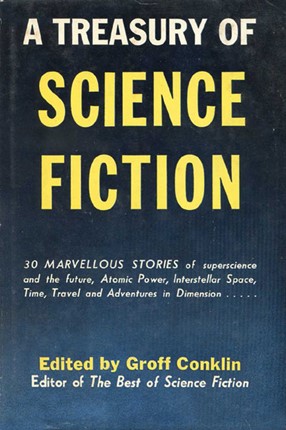
This vignette was first published in Gernsback’s Science Wonder Stories in August 1929, but is probably better known for being the earliest story included in Conkiln’s legendary anthology A Treasury of Science Fiction.
Apparently, it is featured on many fans “best” lists, although I am not sure I know why. As well as the writing style being poor, it is not particularly original either. It is a basic adaptation of an old fairytale concept combined with the lonely immortal conceit, and even my enjoyment of those kinds of stories cannot overcome its predictability. Add on to that the need to state the moral in neon lights at the ending and I just think the whole thing is very poor.
One Star
The Maiden’s Sacrifice by Edward D. Hoch
This very short piece is the other original for the magazine. Receiving a prophecy of their destruction, Cuitlazuma, ruler of the Aztec nation, commissions his scientists to find the secret of eternal life.
Well-meaning but clumsy is the best way to describe this vignette. It attempts to subvert the common European misconceptions of the pre-Columbian Mexico, but it does not feel entirely successful.
Two Stars
First Fandom by Robert A. Madle
Madle here discusses the formation and work of the First Fandom group. These are people involved in SF pre-1938 and work to celebrate it. Such activities include the First Fandom Hall of Fame (so far given to E. E. Smith, Gernsback, Keller & Hamilton) and publication of the First Fandom Magazine.
Not rating this as it is more of an advertisement than an article.
Why The Heavens Fell by Epaminondas T. Snooks, DTG

Illustration by Frank R. Paul
The biography reveals this was written by C. P. Mason, the associate editor of Wonder Stories and published in the same magazine in 1932. The DTG, stands for “Don’t Tell Gernsback”.
Whatever the writer’s name may be, this story tells of Prof. Shnickelfritz and his various inventions. The problem is the power required to run them at the level wanted is huge due to the law of inverse squares. As such, a lobbying effort begins for the government to repeal it.
Lowdnes makes a big deal out of the fundamental flaw in the story, that the US congress cannot repeal universal laws. However, the real problem is it’s a joke story that is not particularly funny. We are told it is intended to mock unscientific science fiction but it ends up being a dull shaggy dog story.
One Star
Famous #9: A Bit of a Thin (Bed) Spread

The Forgotten Planet by Sewell Peaslee Wright

Illustration by H. W. Wesso
The opener here comes from Astounding’s July 1930 edition and is the first of Wright’s series of Cmdr. John Hanson adventures. This premier installment is, surprisingly, structured as a reminiscence of the older Hanson on a classified adventure from his youth. The so called “forgotten planet” (for its name is now scrubbed from all records) has risen in revolt against the Alliance and threatens war with the universe. In order to avoid loss of life Hanson is sent to try to show the inhabitants the error of their ways.
This is a pretty standard space opera of the 30s, the kind of sub-Doc Smith adventures that littered the magazine pages. Whilst the frame is somewhat interesting it contains a number of unexamined questionable choices that dragged the tale down for me.
Two Stars
A Glance Ahead by John Kendrick Bangs

The story dates from 16th December 1899 in Harper’s Weekly and republished in Bangs’ collection, Over The Plum Pudding in 1901. Richard Lupoff gives a great introduction to the man, elucidating on his biography and many works.
After falling asleep on Christmas Eve 1898, Dawson wakes up in 3568. A world where people are immortal consciousnesses with choices of bodies, the government runs all industries for everyone’s good, and poverty has been eliminated.
This is another of the Looking Backward style tales, much in vogue towards the end of the last century. Unfortunately, it is not a particularly good example. It is told through a conversation between Dawson’s incorporeal form and his valet, with lots of ejaculation from Dawson of “my word”. Also, several of the ideas would be silly even for the time, such as everyone having so many gold coins from the wealth created that all their cellars are full (paper money was already common as were cheques, whilst Bellamy hypothesized an electronic card-based system). Finally, his utopian views are very much rooted in the rich white society of the time. To take just one example:
“The Negro, Mr. Dawson, if the histories say rightly, was an awful problem for a great many years. He has so many good points and so many bad that no one knew exactly what to do about him. Finally the sixty-third amendment was passed ordering his deportation to Africa. It seemed like a hardship at first, but in 2683 he pulled himself together and today has a continent of his own. Africa is his, and when nations are at war together they hire their troops from Africa. They make splendid soldiers, you know.”
Interesting as a historical artifact, but little more.
One Star
Space Storm by Harl Vincent
The only original in this issue represents what maybe the last work of this recently deceased master of the pulp era.
Within this tale the Hyperion, an outdated space freighter, has been crippled by a magnetic storm and is trying to limp its way back to Earth. We follow second mate Tom Gardner as he suddenly finds himself in command of a failing ship and a mutinous crew.
Having been in correspondence with Vincent, Lowdnes is able to share that he had to give up writing due to his engineering career, and had only been able to take it up again upon retirement. This is a real shame as, unlike some of his contemporaries, he has clearly continued to evolve over the intervening years, with a good understanding of character and clean prose.
I will admit this style of story is not to my tastes so I will give it Three Stars but I wouldn’t be surprised if Niven fans rated it higher.
The Borders of Science Fiction by Robert A. W. Lowdnes
Lowdnes wades headfirst into the contentious subject of “what is science fiction?”. He gives his own idea that “how essential to the story is the science of science element” should be the deciding factor in borderline cases.
This is an interesting concept, but I find he stretches things in his argument. Stating that therefore A Connecticut Yankee and Glory Road are science fiction and almost all works of the New Wave such as The Crystal World are not because “if the [scientific element] was removed the story would be unchanged” feels odd to me.
Still, I enjoy seeing attempts like this. Whilst I favour a broader definition, my other half would favour it being even more rigid (they refuse to even accept Orwellian fiction or scientific disaster stories as SF). More discussion is always welcome.
Three Stars
Death From the Stars by A. Rowley Hilliard

Illustration by M. Marchioni
This comes from Gernsback’s Wonder Stories of October 1931 and seems to replace the previously advertised Thief of Time by S. P. Meek.
George Dixon and Julius Humboldt seek to discover if life can exist on meteorites. To do this they combine the powder of a meteorite with animal and plant matter into a block. However, whilst observing it, the rays from it horrifically change George. He now radiates death to anything near him. Can Julius help restore his friend?
I found the entire thing hard-to-read pseudo-scientific gobbledygook.
One Star
First Fandom by Robert A. Madle
Madle uses the column this issue to discuss what happened at the last meeting of First Fandom at Baycon. Given they have their own magazine, can they not just print this there?
The Derelict of Space by Ray Cummings

Illustration Frank R. Paul
Our last tale was first published in the 1931 Fall issue of Wonder Stories Quarterly, from a plot outline by William T. Thurmond.
A ship’s crew discover a long-lost vehicle floating in space. This device was one Ronald Deely had disappeared in decades ago, claiming he could use it to travel in time. This derelict “Ship of Doom”, as it is nicknamed, did not have any space travel capacity, so what happened?
Before this I had yet to read anything of Ray Cummings I had enjoyed and, whilst this is better than some, I still have not. The solution to the mystery will probably be obvious to most readers within the first few pages and, for a story that relies on character interactions everyone is remarkably wooden. There are some atmospheric moments but that is all I can think to recommend it.
A low Two Stars
The Final Reckoning
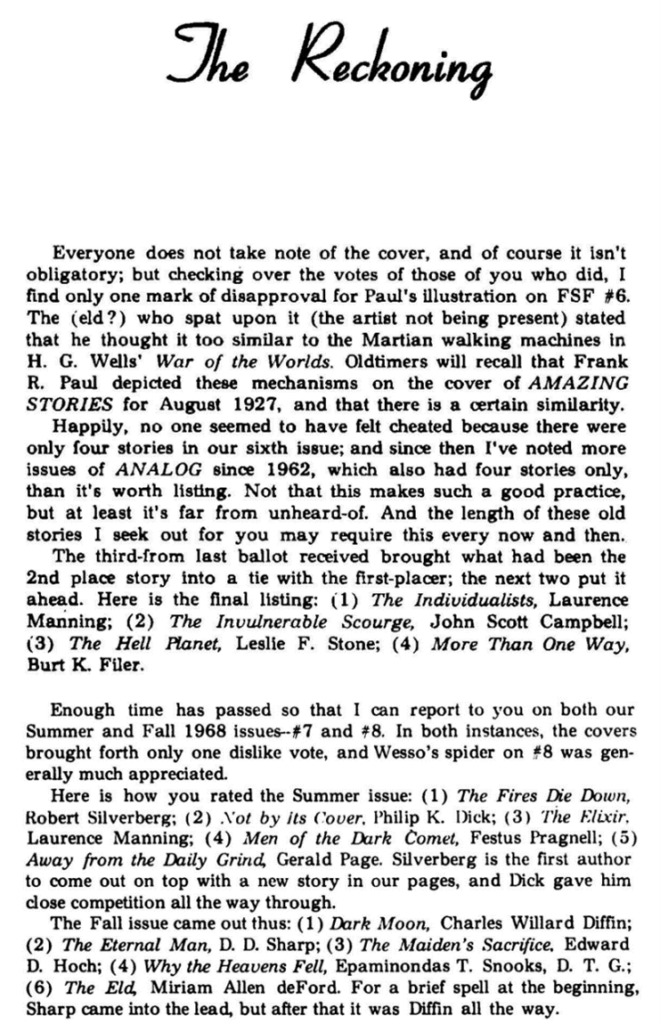
Just a quick look at the other readers' views of the stories in the penultimate 3 issues. We are actually pretty aligned on much of it, although I rate the Sharp and Campbell stories lower. I was sure why Lowdnes says the Silverberg is an original when I have a copy in my Nebulas. However, after conversing with the author he said that US editors generally pay little attention to UK publications, so it is probably simply a case of ignorance.
An Ending?
In the editorial and letters pages Lowdnes reveals that the magazine is no longer on a regular schedule, cannot accept any more subscriptions and contains no details of future contents. This is apparently due to the problems of distribution on American newsstands making the financial situation untenable.

A few other places you can get the “Good Old Stuff”
Magazine of Horror had these problems a few years back and was able to return so we will have to see if Famous does too. However, I wonder if anthologies are now filling this niche, bringing in a mix of 30+ year old SF with newer pieces.
Whatever the case, it appears its current 15 minutes in the spotlight is up. But if it does return, you can be sure we will be here to cover it.


 The Nixons participating in Earth Day.
The Nixons participating in Earth Day.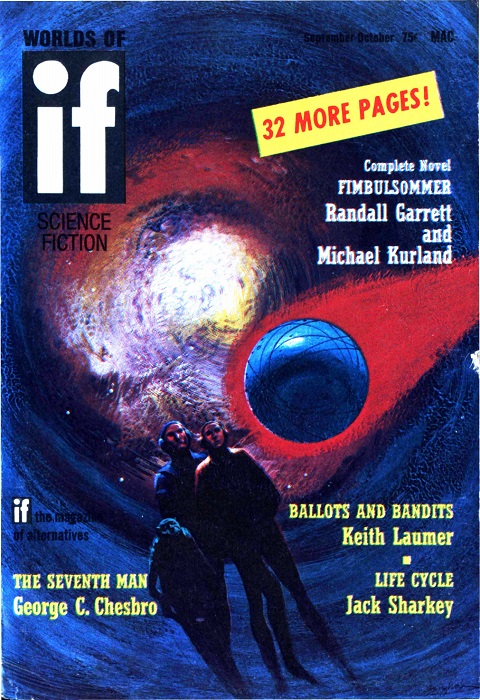 Suggested by “Fimbulsommer.” Art by Gaughan.
Suggested by “Fimbulsommer.” Art by Gaughan.
![[August 2, 1970] Fimbulsommer (September-October 1970 <i>IF</i>)](https://galacticjourney.org/wp-content/uploads/2025/07/IF-1970-09-Cover-480x372.jpg)
![[June 4, 1970] Something old, something new (July-August 1970 <i>IF</i>)](https://galacticjourney.org/wp-content/uploads/2025/06/IF-1970-07-Cover-472x372.jpg)
 La Balsa puts to sea.
La Balsa puts to sea. The Ra II under way. Note the tether keeping the stern high.
The Ra II under way. Note the tether keeping the stern high.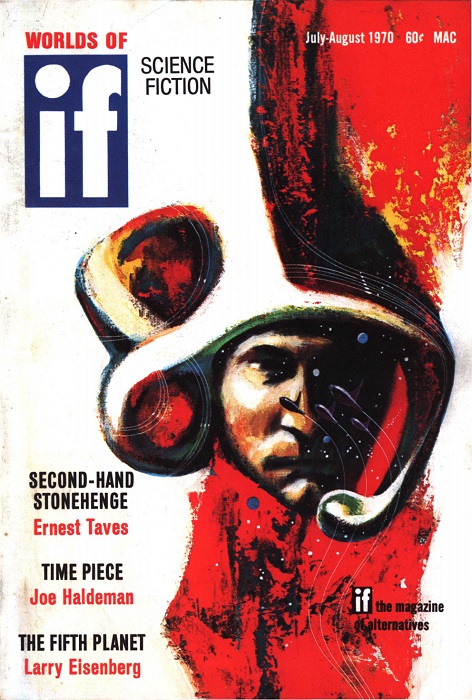 Suggested by “Time Piece”. Art by Gaughan
Suggested by “Time Piece”. Art by Gaughan![[May 6, 1970] Wondrous and Astounding (<em>The Science Fiction Hall of Fame, Volume One</em>, Part One)](https://galacticjourney.org/wp-content/uploads/2025/05/SCNCMVLM161970-516x372.jpg)


![[April 2, 1970] Being Human (May-June 1970 <i>IF</i>)](https://galacticjourney.org/wp-content/uploads/2025/03/IF-1970-05-Cover-472x372.jpg)

 Archbishop Makarios III visiting the Greek royal family in exile in Rome earlier this year.
Archbishop Makarios III visiting the Greek royal family in exile in Rome earlier this year.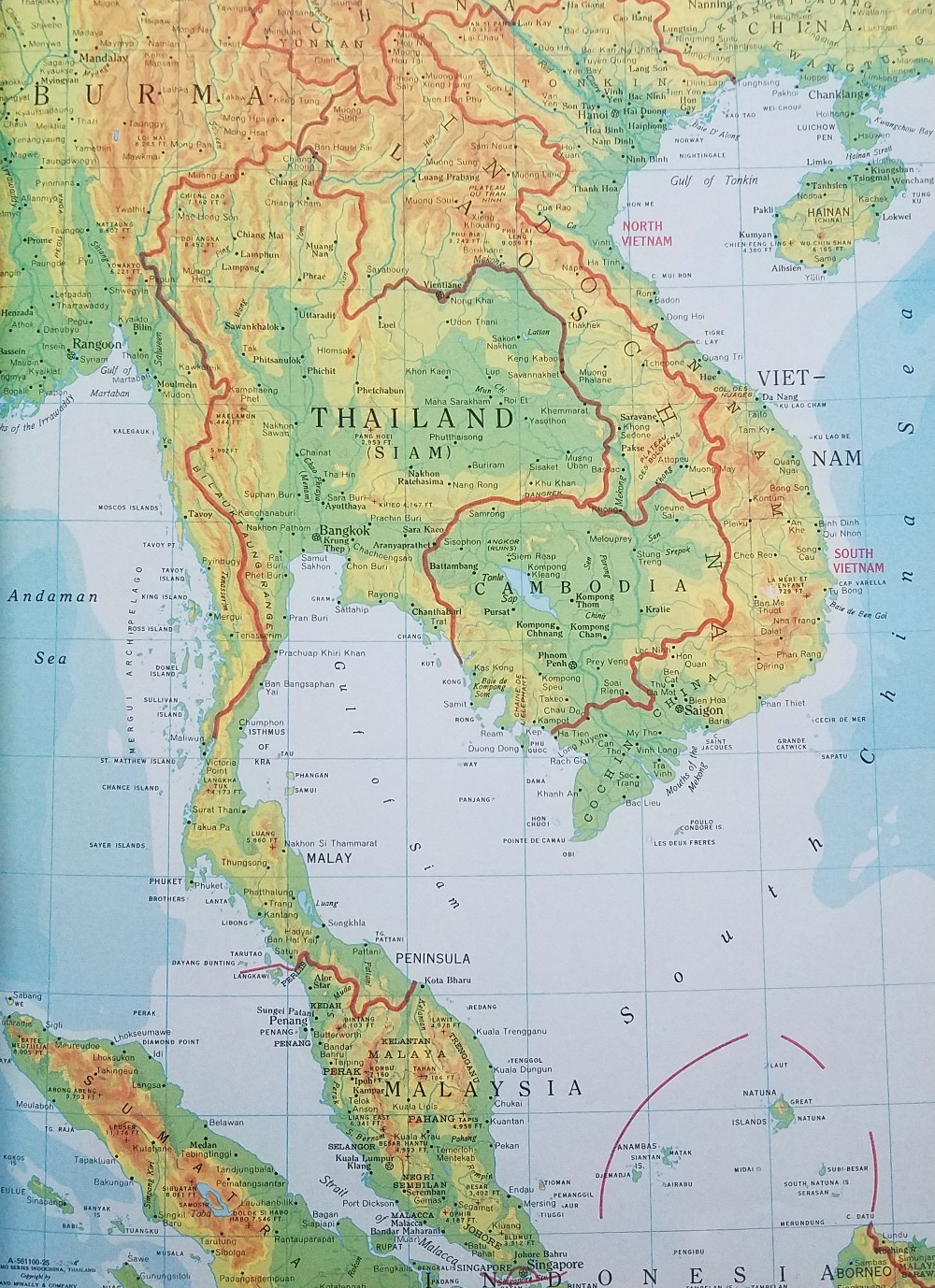
 l: Prince Sihanouk in Paris shortly before his ouster. R: Prime Minister Lon Nol.
l: Prince Sihanouk in Paris shortly before his ouster. R: Prime Minister Lon Nol.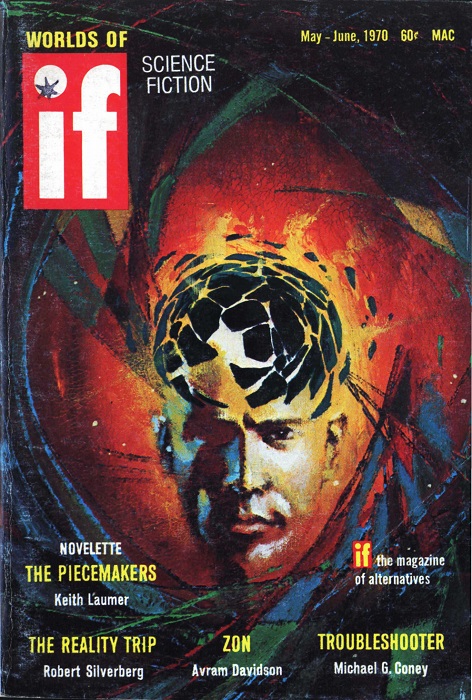 Suggested by Troubleshooter. Art by Gaughan
Suggested by Troubleshooter. Art by Gaughan![[August 14, 1969] Twin tragedies (September 1969 <i>Galaxy</i>)](https://galacticjourney.org/wp-content/uploads/2024/08/690814galaxycover-417x372.jpg)














![[August 2, 1969] Specters of the past (September 1969 <i>IF</i>)](https://galacticjourney.org/wp-content/uploads/2024/07/IF-1969-09-Cover-494x372.jpg)

 Salvadoran President and General Fidel Sanchez Hernandez inspecting the troops.
Salvadoran President and General Fidel Sanchez Hernandez inspecting the troops. A robot carrying off a fainting human woman. It’s not as old-fashioned as you might think. Art by Chaffee
A robot carrying off a fainting human woman. It’s not as old-fashioned as you might think. Art by Chaffee![[July 8, 1969] Nowhere fast (August 1969 <i>Galaxy</i>)](https://galacticjourney.org/wp-content/uploads/2024/07/690708galaxycover-450x372.jpg)


![[June 2, 1969] The ever-whirling wheel (July 1969 <i>IF</i>)](https://galacticjourney.org/wp-content/uploads/2024/05/IF-1969-07-Cover-495x372.jpg)
 Art credited only as couresy of Three Lions, Inc. but actually by German artist Johnny Bruck.
Art credited only as couresy of Three Lions, Inc. but actually by German artist Johnny Bruck.![[April 6, 1969] The Weight of History (May 1969 <i>IF</i>)](https://galacticjourney.org/wp-content/uploads/2024/03/IF-1969-04-Cover-500x372.jpg)
 A map showing the location of Chenpao/Damansky Island
A map showing the location of Chenpao/Damansky Island Chinese soldiers pose with their captured Russian tank
Chinese soldiers pose with their captured Russian tank The cover illustrates Groovyland and is credited as courtesy of Three Lions, Inc., but see below
The cover illustrates Groovyland and is credited as courtesy of Three Lions, Inc., but see below![[March 31, 1969] 15 Minutes of Famous (Famous #8 & 9)](https://galacticjourney.org/wp-content/uploads/2024/04/690406famousx2-618x372.jpg)













